Top 7 Best Overhead Drum Mics
We may also earn commissions on purchases from other retail websites.

Recording music is a pretty tricky business on its own. Most people think that guitars are complicated since you have to choose the amp, the mic, the speaker cabinet, plug-ins if that's what you're running and so fort. However, it's arguable that drums are much harder to record. One of the main tools you can use to get this job done are overhead mics. Today we are going to show you our picks for top 7 best overhead drum mics. Some of these are among the best and are used daily to record some of the best drum sets available.
Top 7 Best Overhead Drum Mics:
| Image | Overhead Drum Mics / Rating | Summary | Check Price |
|---|---|---|---|
+ - 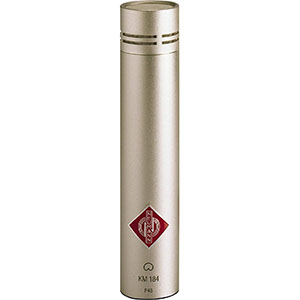 | Neumann KM 184 Total of 4.92/5 | One of the most legendary overhead condensers on the market right now. | |
+ - 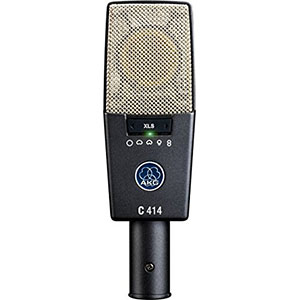 | AKG Pro Audio C414 XLS Total of 4.88/5 | A great microphone with a proven track record that goes back decades. | |
+ - 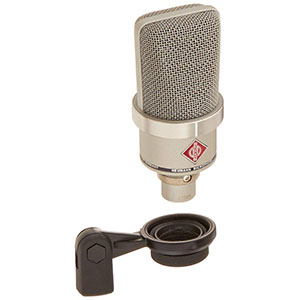 | Neumann TLM 102 Total of 4.78/5 | A very capable large diaphragm condenser that can handle high SPLs regularly. | |
+ - 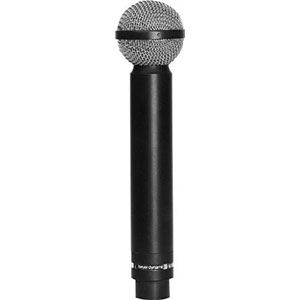 | Beyerdynamic M160 Total of 4.75/5 | A compact double ribbon design which brings on great features and performance. | |
+ - 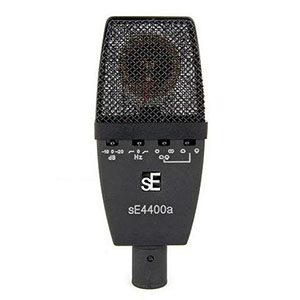 | sE Electronics sE4400a Total of 4.57/5 | One of the best mid range solutions that covers all the basics. | |
+ - 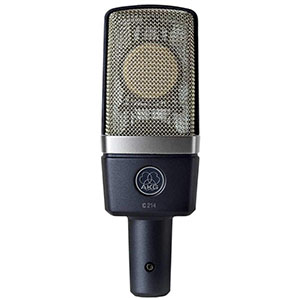 | AKG C214 Total of 4.57/5 | Another AKG model that really brings in the functionality and great range. | |
+ - 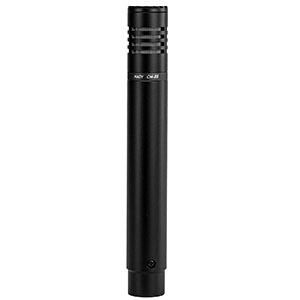 | Nady CM-88 Total of 3.75/5 | An affordable but usable solution that covers the basics of overhead recording. |
Neumann KM 184

| Design: |  |
| Features: |  |
| Sound: |  |
| Value: |  |
f you really want to go for the best workhorse overhead mic, you have to check out Neumann KM184. Truth be told, this mic is a spiritual successor of the legendary KM84 which is the one responsible for the reputation both of these mics have. However, although they aren't quite sonically identical, KM84 and KM184 we are looking at here are definitely closely related. What defines this model is its ability to capture great amounts of detail, and offer a variety of options when it comes to overhead recording. These definitely require a bit of know how, but if you are willing to put in the work, a set of KM184s will make yield impressive results you will rarely replicate.
AKG Pro Audio C414 XLS

| Design: |  |
| Features: |  |
| Sound: |  |
| Value: |  |
If there's one brand that knows a thing or two about recording music and drums in particular, it's AKG. Their gear is used all over the world and chances are that your local studio is running a pair of AKG Pro Audio C414 XLS overhead mics. These are known for their wide dynamic range, very linear response, great SPL handling which makes them pretty agile, and finally a wide range of patterns. One of the most important aspects of any overhead mic is the ability to fine tune both the mic and its positioning. With three levels of attenuation and five recording patterns, you're looking at all the freedom you could need. AKG C414 XLS is the way to go.
Neumann TLM 102

| Design: |  |
| Features: |  |
| Sound: |  |
| Value: |  |
It's absolutely no secret that overhead mics need to be able to handle high SPL values on the regular. After all, drum sets in general move a lot of air. Neumann's TLM 102 represents a pretty standard condenser package with the exception of it being able to handle 144dB of sound pressure level. That not only makes it suitable for overheat use but some other, more demanding applications that might come up when drum recording is in question. The mic also features a pretty flat response across the range, making it quite malleable and versatile. On the inside you have an internally suspended large diaphragm capsule, great hardware and all the goodies you'd expect from a mic of this type.
Beyerdynamic M160

| Design: |  |
| Features: |  |
| Sound: |  |
| Value: |  |
One of the more interesting designs on the market comes in form of the Beyerdynamic M160. The reason this mic is so interesting is the fact that it isn't a condenser like just about everything on our list. Instead, this bad boy utilizes a double ribbon design that and a hypercardioid pattern. There are several significant advantages to this design. For starters you are getting a very versatile coverage with excellent off-axis rejection. The frequency response range that spans from 40Hz to 18kHz also helps, especially since it's fairly flat all the way through. On top of that, M160 can handle a whole lot of volume, which makes it perfect for overhead applications. At this price, it is a steal.
sE Electronics sE4400a

| Design: |  |
| Features: |  |
| Sound: |  |
| Value: |  |
Trying to get some recording done on a budget can be difficult. However, once you scratch the surface and check out different options on the market, you will run into pretty capable mics such as the sE Electronics sE4400a. This condenser features a pretty basic but utilitarian set of features that allow you to fine tune your recording setup to a decent extent. The mic handles high SPLs quite nicely and comes with both -10db and -20dB attenuation. One thing to note is that it features two patterns, the standard cardioid and a supercardioid. At this price, you'll rarely find this type of clarity and and performance, that is for sure. This is a great middle of the road option.
AKG C214

| Design: |  |
| Features: |  |
| Sound: |  |
| Value: |  |
Much like the C414, The C214 utilizes the same dual capsule design, the very same Back Plate technology and so much more. The major difference between the two models is the lack of features that some find crucial. Truth be told C214 was designed primarily as a vocals condenser microphone, but it has been utilized quite effectively as an overhead mic by numerous producers for years now. One of the major reasons why this model is so popular these days is the fact that that you can get 2 of these for the price of one C414. That makes it a perfect model for those on a budget or those who are just getting into recording drums on their own.
Nady CM-88

| Design: |  |
| Features: |  |
| Sound: |  |
| Value: |  |
The last model on our short list comes from Nady and represents what you can get on a budget. We are talking bare bones minimalism that still gets the job done. The key factor that makes this mic great is its forgiving cardioid pattern. It's tight, offers plenty of clarity and allows for less than perfect positioning. The mic itself packs a decent capsule that can handle moderate SPLs. Nady has designed the CM-88 mostly as a cymbals mic, but it works quite well as an overhead rig in a pinch. In our opinion this is a great model to get started with if you are on a budget. Especially if you plan on experimenting with stereo overhead layouts later.
Understanding Overhead Microphones
Recording drums is an art form. That is a pretty bold statement, but also one that holds a lot of merit. The problem with recording drums is the fact that you can't really plug them in. That is unless you are talking about electronic drum kits, but those are a whole different ball game. Acoustic drum kits, just like most other acoustic instruments out there, rely on microphones. However, unlike most other acoustic instruments, drums don't have just one component that produces sound.
Instead, they can have as many as 20. How do you record all of that with microphones while retaining any semblance of balance and order? An overhead microphone is a tool that producers use to record drums in their entirety. It isn't always an easy task depending on how many elements are in the kit, but it's usually doable. There aren't many rules here simply because not every drum set is the same. However, it is also true that being able to nail perfect positioning can allow you to make awesome recordings of $2000 drum kits with nothing more than an affordable condenser. In a similar fashion, you can use a pretty expensive ribbon mic and make a beginner drum set sound quite awesome as well. The key is knowing how to us what you have. Today we are going to talk about what makes good overhead mics, how to use them and what to expect from them in general.
What Makes a Good Overhead Microphone?
Overhead mics come in a variety of shapes, sizes and types. There is no single type of microphone that suits all of the recording needs. Instead, you have to use what best suits the occasion. Naturally, this means that you need to know your stuff as a producer, but that is a story for a different time. Even though this while topic is kinda fluid, there are still some rules of thumb that will help you get find what you need.
Types of Overhead Mics
As you probably know already, there are three types of microphones out there. You have the condensers, dynamic microphones and ribbon mics. Essentially, all of these can be used as overhead mics depending on the sound your after and the overall vibe you want to achieve. Since microphones are rarely 100% transparent, there is always going to be some color added to your drum set while you record them. This is where selecting different kinds of mics can yield different results.
Condensers
Condensers are the oldest microphone design known to us, but also one of the best. These are known for being able to capture a lot of detail using a membrane sitting in a capsule. Most of the mics on our list are condensers in nature. Contrary to popular belief condensers don't have to be these large, bulky things that break easily. Modern condenser designs and manufacturing processes have pretty much solved the issue of reliability. Condensers are widely use as overheads for a few more reasons aside from their ability to capture fine detail. They can also handle decent SPL levels when used correctly, but most importantly they come with a whole array of different recording patterns. These are very important if you want to exert full control over your mix. If you aren't sure which type of mic to get for your overhead needs, going with a condenser is always a safe bet.
Ribbon Mics
Ribbon design is a fairly recent development and is generally regarded as more delicate and more expensive than the standard condenser. There is definitely merit to both of these claims. However, ribbons are also known for having plenty of range and being able to capture the sound of drums in a way that standard condensers simply can't. Their frequency range is generally much more flexible as well. We have included one awesome ribbon mic in our list, but there are definitely many others out there that fit the bill.
Dynamic Microphones
Last and the least popular choice for overhead use are dynamic microphones. These are often the last alternative mainly because of their slightly less sensitive nature. Dynamic mics can handle a whole lot of SPL since they work on a completely different principle compared to both condensers and ribbons. To be completely honest, there are instances where condensers are preferable to any other type of mics. There are producers who insist on using legendary dynamic mics such as the Shure SM57s in an overhead configuration. Again, it all comes down to your needs and preferences as well as what the occasion demands for.
How To Use Overhead Mics?
Recording with overhead microphones is all about positioning. In this segment of the guide we will talk about a few basic techniques which you can use to get started down the right path. Ultimately, positioning comes down to experimentation, experience and just finding the balance between your drum's components.
Pairs VS Single Mics
One of the first questions you will have to answer is whether you can get by with just one mic or you need a pair? In most cases a pair of overheads not only makes life easier, but is also a necessity. However, you can get decent results with a single mic in a pinch.
Microphone Positioning
As we have already determined, it is all about positioning that microphone just right. Going forward we will assume that you are working with a pair of mics. The most basic overhead layout has you positioning the mics over your cymbals with the capsules pointing straight down. Idea here is to balance out the acoustic projection of your shells with the shimmering sound of your cymbals. The mics need to be fairly high up as well, otherwise your cymbals will come out too strong.
Another way to go about this is to position the microphones up high at the very center of your kit. That would mean somewhere right above your mid toms. Mics need to be pointing straight down with the capsules facing away from each other. This will give you a more focused image and more coherency between the two mics. With that said it is worth keeping in mind that overhead positioning is all about experimentation. You need to spend time finding that perfect mic position that gives you the best sound. Sometimes it is going to require you making compromises depending on your gear, mics and the drum set in question. AS long as you are armed with patience and will to explore the possibilities, you should be fine.
Conclusion
Overhead microphones are a very exciting type of recording tool to have as a drummer or a producer. These mics can make all the difference when it comes to recording drums. The models we've shown you above are some of the best out there. One thing you should remember is that every mic has its own character or flavor if you will. All the pros out there have whole cabinets full of mics. Even so, getting started with the right gear is always a good way to ensure success. All of these mics on our list will get you that.



Reader Interactions